The Malvinas Islands became part of an area under Spanish jurisdiction with the entry into force of the first international instruments to delimit the "New World" soon after its discovery in 1492. Papal Bulls and the Treaty of Tordesillas of 1494 are the first instruments reflecting Spanish titles in accordance with international law of the period.
For most of the 16th century only navigators in the service of Spain travelled the maritime routes along the South American coast, advancing southwards in their search for an inter-oceanic passage. In this process the Malvinas Islands were discovered by members of Magellan?s expedition of 1520. From that moment on they were recorded on European maps under a variety of names and remained under effective control of the Spanish authorities.
During the 17th century the Malvinas Islands were sighted by navigators from other nations who had ventured into Spanish domains at the risk of provoking reactions and protests from Spain whenever it received news of such expeditions. But the whole southern region of America, with its coasts, seas and islands, indisputably remained under Spanish sovereignty through the different treaties signed in the period, such as the ?American? Treaty of 1670 between Spain and England.
The Peace of Utrecht, signed in 1713, assured the integrity of Spain?s possessions in South America and confirmed its exclusive right to sail in the waters of the South Atlantic. As a signatory of the Utrecht agreements, and of later treaties in the 18th century ratifying them, England accepted these clauses. However, towards the middle of that century, the Malvinas Islands provoked the interest of Great Britain and France, which were seeking to establish a strategically located settlement opposite the Strait of Magellan.
In 1749 Spain received news of a British project to settle the Malvinas Islands and strongly protested to the government of Great Britain which as a consequence decided against it.
When in 1764 France established Port Louis on Soledad Island, Spain objected and won the recognition of its rights to the islands from France. The French government ordered the evacuation and handover of the settlement to the Spanish authorities. The handover was made in 1767 and from then on a Spanish governor responsible to Buenos Aires was resident in the Malvinas Islands.
The year after the French settlement, a clandestine British expedition arrived in the archipelago and in 1766 English sailors established a fort at a place they named Port Egmont on an island to the west of Gran Malvina. Despite the secrecy of the British government, Spain became aware of it and insisted on protesting its rights. Not receiving an acceptable response, it set out to find the illegal settlement and in 1770 expelled the settlers by force. As a result of that act, both countries were on the verge of war, which was averted by a bilateral agreement signed in 1771. This agreement consisted of a Declaration by which Spain returned Port Egmont to the British in order to save the honour of the King of England, making express reservation of its sovereignty over the whole of the Malvinas Islands, and also of an Acceptance of this Declaration in which Great Britain remained silent as to the reservation of Spanish rights. As part of the agreement it was verbally agreed that the English would withdraw from Port Egmont, which they did in 1774. From then on the Spanish authorities in Puerto Soledad continued to exercise their jurisdiction and control over the whole of the archipelago.
In 1790, with the signing of the Treaty of San Lorenzo at the El Escorial, Great Britain undertook not to establish any settlements on either the eastern or the western coasts of South America or on the adjacent islands already occupied by Spain such as the Malvinas Islands.
Spain appointed a succession of thirty-two governors in the Malvinas Islands up to 1811, when the garrison at Puerto Soledad was summoned to Montevideo to defend the Spanish monarchy at the beginning of the Wars of Independence. In the framework of this conflict, the first governors of the United Provinces of the Río de la Plata included the Malvinas in different administrative acts, considering them an integral part of their territory inherited from Spain by the succession of States in accordance with the uti possidetis juris of 1810.
In 1820, while difficult conditions reigned due to internal struggles faced by the Argentine state in formation, naval Officer David Jewett took possession of the Malvinas Islands on behalf of the United Provinces of the Río de la Plata at a public ceremony at Puerto Soledad, which was attended by sealers and whalers of different nationalities, including American and British, who happened to disembark on the islands in the course of their work. The news was published in the media in the United States and the United Kingdom but there was no official comment from either country. Nor did Great Britain stake any claim to the Malvinas Islands in the process of recognition of Argentina which ended with the signing by both countries of the Treaty of Friendship, Trade and Navigation in 1825.
During the 1820s, Argentine governments took various actions confirming their sovereignty over the Malvinas Islands, including the appointment of governors, legislation on fishing resources and the granting of territorial concessions. As a result, Puerto Soledad grew and its inhabitants worked in stockbreeding, sealing and providing services to the boats, which came into port.
On 10 June 1829, the Argentine government enacted a decree creating the Political and Military Command of the Malvinas Islands. After having remained silent for over 50 years, in the course of which there had been successive uncontested Spanish and Argentine administrations in the Malvinas Islands, in November 1829 the United Kingdom objected to that decree against the backdrop of renewed strategic interest in the South Atlantic.
At the end of 1831, a United States warship razed Puerto Soledad as reprisal for the capture of sealing vessels caught infringing fishing laws by the Argentine authorities. The Argentine government immediately began attempts to obtain reparations from the United States and at the same time sent a navy schooner to restore order in the islands upset by the arrival of the American vessel.

